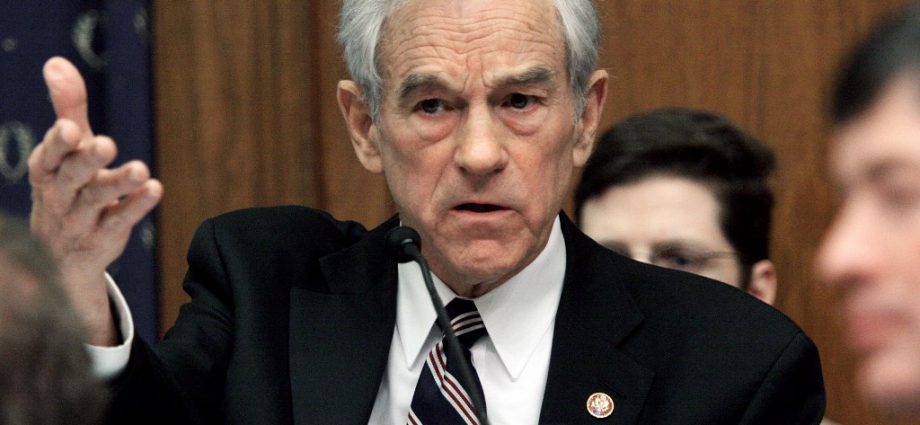
Thousands of people assembled at the Lincoln Memorial in Washington, DC, on February 19 to protest against the US proxy war using Ukrainians as cannon fodder to bring down Russia. It took as its name “Rage against the War Machine,” and it sought to bring together people of all political persuasions in opposing the war. “Everyone in; no one out,” an invitation might have been framed.
Not only was it the first national demonstration against US President Joe Biden’s cruel proxy war; it was the first to be live-streamed, and is now archived here with all the speeches.
The crowd in DC was estimated variously from 2,000 to 5,000, with sister rallies in 19 other cities. This was a remarkable achievement as the first action for a fledging. Its success is testimony to the hunger for such a broad-based movement.
And broad-based it was, another first, bringing together people from across the political spectrum to oppose the war. The lead organizations were the leftist People’s Party and the Libertarian Party.
The broad base was reflected by four former US presidential candidates, well-known national figures, among the many speakers: Ron Paul, Dennis Kucinich, Jill Stein and Tulsi Gabbard. No other anti-war protest in the US even aspires to such inclusivity.
Without such an inclusive anti-interventionist movement, it is virtually impossible for popular forces in the US to end the war in Ukraine, let alone wider wars with Russia or China. This kind of popular movement must succeed if we are to get off the road to nuclear war, World War III. We have no other alternative as we face a threat to our very existence. It must grow if we are to survive.
The February 19 protest was the first to raise as its lead demand “Not one more penny for war in Ukraine.” This is simple and direct and captures the nature of the growing discontent over the war.
Previous smaller, local demonstrations most often called for “peace in Ukraine,” a sentiment, not a demand, and one that can easily be co-opted by war hawks. After all, Joe Biden is for “peace in Ukraine” – once Russia has been brought to its knees, the goal of the war as Secretary of Defense Lloyd Austin and Undersecretary of State Victoria Nuland state openly.
“Not one more penny for war in Ukraine” is directed at the role of the US government, the only one we Americans can influence. If that demand were met, then a negotiated settlement would have to be undertaken.
As the second demand of the demonstration, “Negotiate Peace,” states: “The US government instigated the war in Ukraine with a coup of its democratically elected government in 2014, and then sabotaged a peace deal between Russia and Ukraine in March. Pursue an immediate ceasefire and diplomacy to end the war.”
“Not one more penny for war in Ukraine” addresses the needs of Americans, whose support it was designed to develop. Most Americans feel this war in their pocketbooks, and the last thing we need is more tax dollars on top of the more than $113 billion allotted in 2022. It is a demand meant for the ears of the US government – and of the American people.
Average Americans feel the effects of this war in their daily lives. They are strapped by inflation worsened by the war, by an economy slipping into recession, by neglected disasters like the toxic spill in East Palestine, Ohio, by rising national debt, by the crisis of homelessness, and by a health-care system that grows ever more expensive, less comprehensive and less universal.
This demand is so eminently practical that is now embodied in a resolution that has been introduced in the House of Representatives, aptly named “The Ukraine Fatigue Resolution.” It is authored by Representative Matt Gaetz and has gained 15 co-sponsors so far. It quite simply calls for the US to “end its financial and military aid to Ukraine.”
(A weakness of the bill is that it is only “a sense of the House,” not a law that is binding. A strength is that a vote on it would force Congress members to stand up and be counted. Most important, it is a beginning, and shows that anti-war sentiment is growing. A binding law is the next step.)
Tellingly, Gaetz and all co-sponsors of the bill are Republicans, a rebuff to the idea that anti-war sentiment exists only on the “left.” The desire to end this war could be universal if politics and ideology would get out of the way. The next step is for some – even one – progressive in Congress to sign on to the Gaetz bill. That way, the US Congress would mirror the universalist sentiment we saw in the streets on February 19.
Finally, a broad-based movement like RageAgainstWar is part of a growing international trend, as Max Blumenthal discussed here beginning at the 1 hour, 37 minute mark. As one example, six days after the February 19 rally, Sarah Wagenknecht, member of the German Bundestag and of Die Linke, and feminist activist Alice Schwarzer led a demonstration of tens of thousands at the Brandenburg Gate in Berlin.
It too called for an end to military funding for Ukraine. When Wagenknecht was asked if members of the right-wing AfD (Alternative für Deutschland) were welcome, she declared they were if they opposed the war. And Schwarzer said it is time to look beyond left and right.
Schwarzer’s plea to look beyond left and right should constitute watchwords not only for Germans, but for Americans and the entire West as we face the peril of nuclear war that could easily be triggered by this cruel US proxy war.

